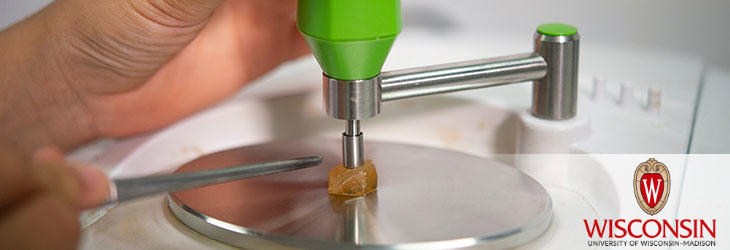Research Tools

Culturing Human Embryonic Stem Cells in Well Defined and Controlled Conditions
WARF: P05355US
Inventors: Tenneille Ludwig, James Thomson
The Wisconsin Alumni Research Foundation (WARF) is seeking commercial partners interested in well defined and controlled culture conditions that make possible the derivation and maintenance of human ES cell lines without direct or indirect exposure to animal cells of any kind.
Overview
Human embryonic stem (ES) cells are potentially capable of supplying cells and tissues for replacement of defective human tissue. However, procedures currently used to culture human ES cells involve the use of non-human cells and protein products, including murine cell proteins (through direct or indirect exposure to feeder layers or cell products in the matrix) and bovine serum products. Preparation of feeder layers is labor intensive, and use of animal products not only provides a significant amount of variation in culture, but also raises concerns regarding cross-species contamination.
The Invention
UW-Madison researchers have developed culture conditions for human ES cells that are entirely free of animal products, feeder cells and conditioned medium. These conditions permit the indefinite culture and proliferation of human ES cells in an undifferentiated state.
The medium includes high levels of a fibroblast growth factor, salts, vitamins, amino acids, glucose, gamma-aminobutyric acid, transforming growth factor beta, pipecholic acid, a lithium salt and lipids. It has been shown to support undifferentiated ES cell proliferation through at least thirteen passages and has proven sufficient to support the derivation of new lines of human ES cells.
The culture conditions also include a biological matrix in the culture vessel. The biological matrix is composed of four human proteins - collagen, laminin, fibronectin, and vitronectin.
No animal products of any kind and no fibroblasts from any species, including humans, are necessary in the culture. Instead, only purified, well characterized components are used to provide a more consistent culture system.
The medium includes high levels of a fibroblast growth factor, salts, vitamins, amino acids, glucose, gamma-aminobutyric acid, transforming growth factor beta, pipecholic acid, a lithium salt and lipids. It has been shown to support undifferentiated ES cell proliferation through at least thirteen passages and has proven sufficient to support the derivation of new lines of human ES cells.
The culture conditions also include a biological matrix in the culture vessel. The biological matrix is composed of four human proteins - collagen, laminin, fibronectin, and vitronectin.
No animal products of any kind and no fibroblasts from any species, including humans, are necessary in the culture. Instead, only purified, well characterized components are used to provide a more consistent culture system.
Applications
- Derivation and maintenance of human ES cell lines
Key Benefits
- No animal products, including no mouse Matrigel
- No feeder cells
- No conditioned medium
- Makes possible the derivation and maintenance of human ES cell lines in well defined and controlled conditions without direct or indirect exposure to animal cells of any kind
- Eliminates one potential hurdle to the use of ES cells in human cell therapies
- Eliminates two of the major sources of variability in cultures
Additional Information
For More Information About the Inventors
Tech Fields
For current licensing status, please contact Andy DeTienne at [javascript protected email address] or 608-960-9857